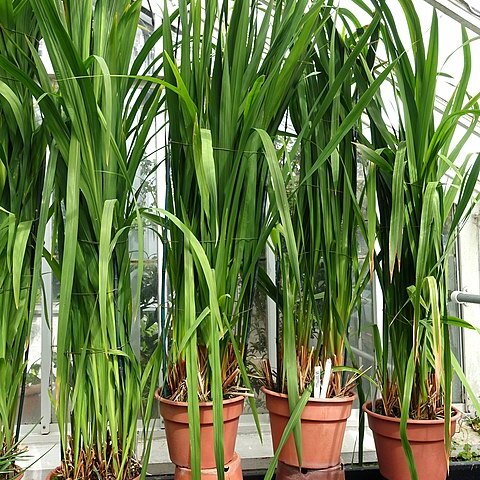Herb to 1.2 m (–1.5) high. Corm 5–6 cm diam. Basal leaves lanceolate to ensiform, 25–45 cm long, 3–5 cm wide, glaucous; midvein prominent; margins thickened to 1 mm, yellow-brown. Spike usually with many short appressed branches; flowers crowded. Bracts lanceolate, acuminate, 12–18 mm long, scarious, becoming lacerated, pallid. Flowers pale pink or mauve. Perianth tube 13–15 mm long, dilated slightly at the mouth; lobes spreading, obovate, apiculate, 13–20 mm long, 7–10 mm wide. Stamens equilateral; anthers 6–8 mm long, yellow; staminodes 3, minute, alternating with stamens. Style usually not exceeding stamens; branches very short, bifid. Capsule ovoid, acute, 8–12 mm long, blackish. Bulbils absent.
Cormous geophyte, 50-200 cm. Leaves broad with thick hyaline margins and midribs. Flowers actinomorphic, pink, occasionally white or purple.

